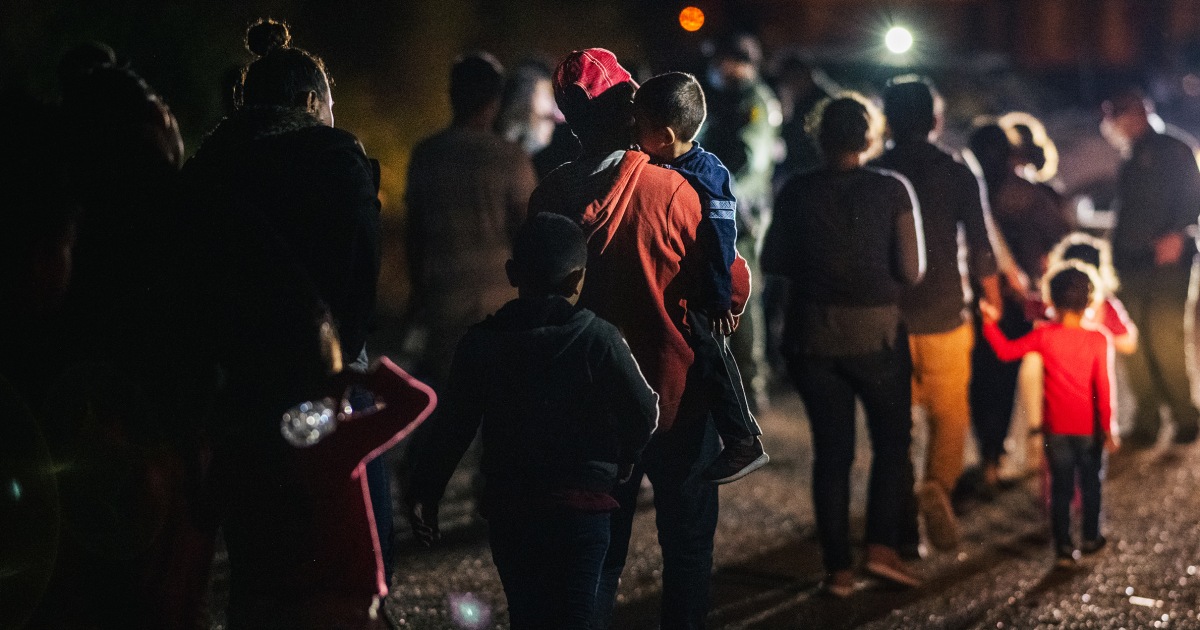As Donald Trump promises the largest mass deportation of undocumented immigrants in U.S. history if re-elected, his team is considering withholding federal police grants from local law enforcement agencies that decline to take part in the deportations, three sources close to the Trump campaign told NBC News.
The move could prompt legal challenges, as a similar policy did in the first Trump administration. The sources also cautioned that no plans are set in stone until Trump announces them himself.
The Trump campaign did not respond to requests for comment.
The three sources close to the campaign claimed that the tactic would survive legal challenges and pressure blue states, counties and cities into participating in mass deportations.
Ron Vitiello, who was acting director of Immigration and Customs Enforcement during Trump’s first term, recalled administration officials’ deep frustration when prolonged court battles with Democratic-controlled states and cities blocked Trump’s plan.
“The Justice Department was going to withhold grant money,” Vitiello told NBC News. “They didn’t get to enjoy, if you will, or participate in that fully.”

So-called sanctuary cities, like Chicago, and states, like California, currently decline to alert ICE when they encounter or arrest undocumented immigrants. When undocumented immigrants finish serving their time in state prisons or local jails, they are generally released into the community rather than handed over to ICE.
Trump has vowed that if he returns to office, he will immediately begin rounding up undocumented im across the country, starting with those who have criminal records or final orders of deportation.
Nearly 1.5 million immigrants in the U.S. have final orders of deportation, according to ICE officials. And more than 430,000 immigrants with criminal records are believed to be living in the country outside of ICE detention. It is not clear to what extent the two groups overlap.
During the first Trump administration, over 400,000 immigrants with criminal records lived in the U.S. outside of ICE detention, roughly the same number as do under the Biden-Harris administration.
Having federal agents arrest and deport as many as 1.9 million such immigrants would cost nearly 10 times ICE’s current annual budget, according to the American Immigration Council, a pro-immigration research and advocacy organization.
To pressure local law enforcement agencies to cooperate, the Trump team would cut off their access to Justice Department grants, the three sources said. The Justice Department describes the grants, known as the Byrne JAG grant program, as the “leading source of federal justice funding to state and local jurisdictions.”
The Justice Department has historically given out over $250 million in funding per year to state and local law enforcement agencies through the Byrne JAG grant program. The process is competitive, and law enforcement organizations have used the funding to cover policing costs to drug rehabilitation centers to corrections programs.
During Trump’s first term in office, several states, including New York, sued the administration after it cut off Byrne JAG grants to sanctuary cities. After an appeals court sided with the Trump administration, the Democratic-controlled states appealed to the Supreme Court. And that legal maneuver, in essence, ran out the clock on the first Trump administration.
Before the Supreme Court ruled, Joe Biden won the 2020 election, took office and restarted the grant program for sanctuary cities. Trump campaign officials say they are confident that they can quickly get legal challenges to the Supreme Court and that the high court’s conservative supermajority will back them.
Vitiello said a second Trump administration would also offer additional funding to state and local police departments that participate in the mass deportations.
“I could see, under the administration, an incentivization,” Vitiello said. “Or some way to attach leverage for those that don’t want to comply.”










